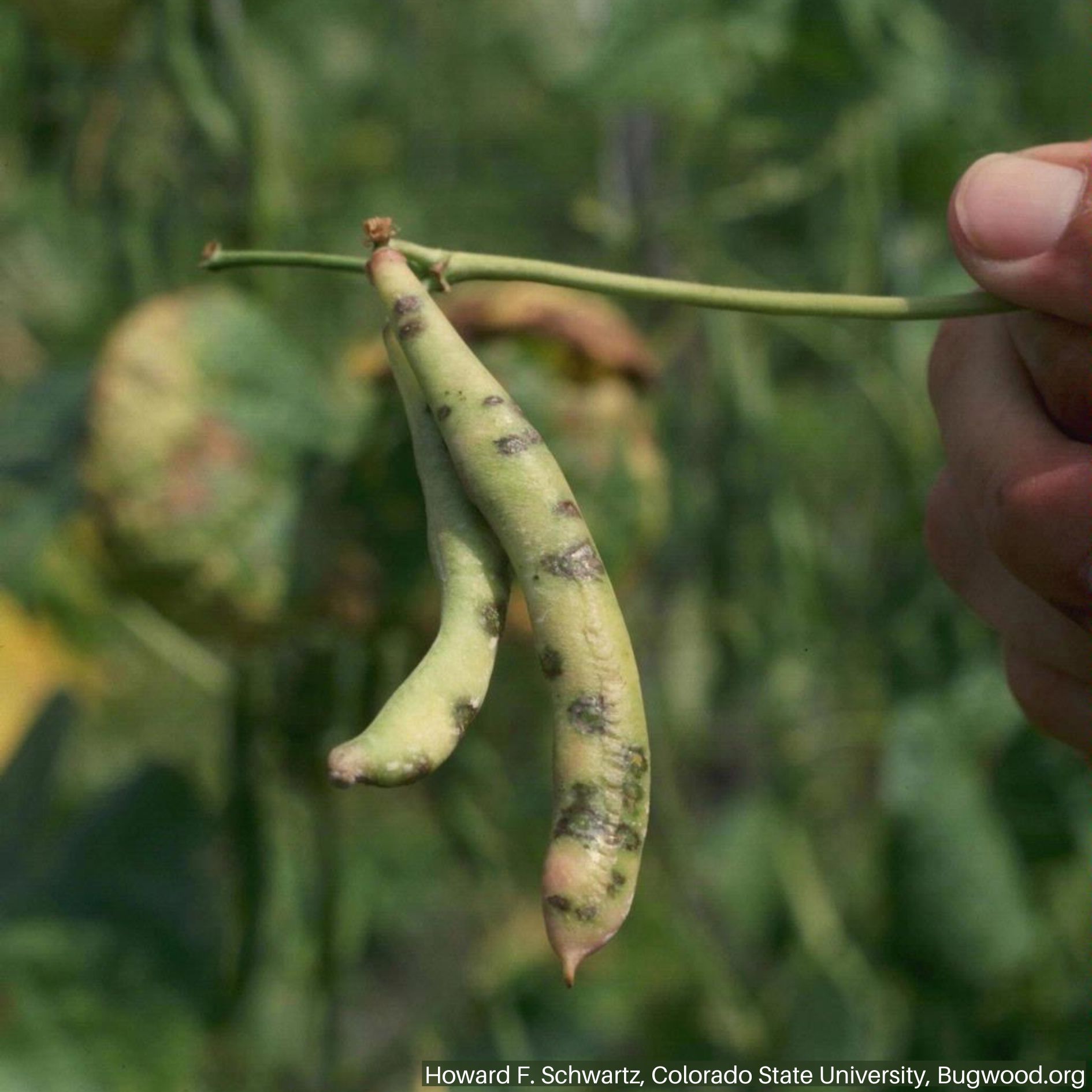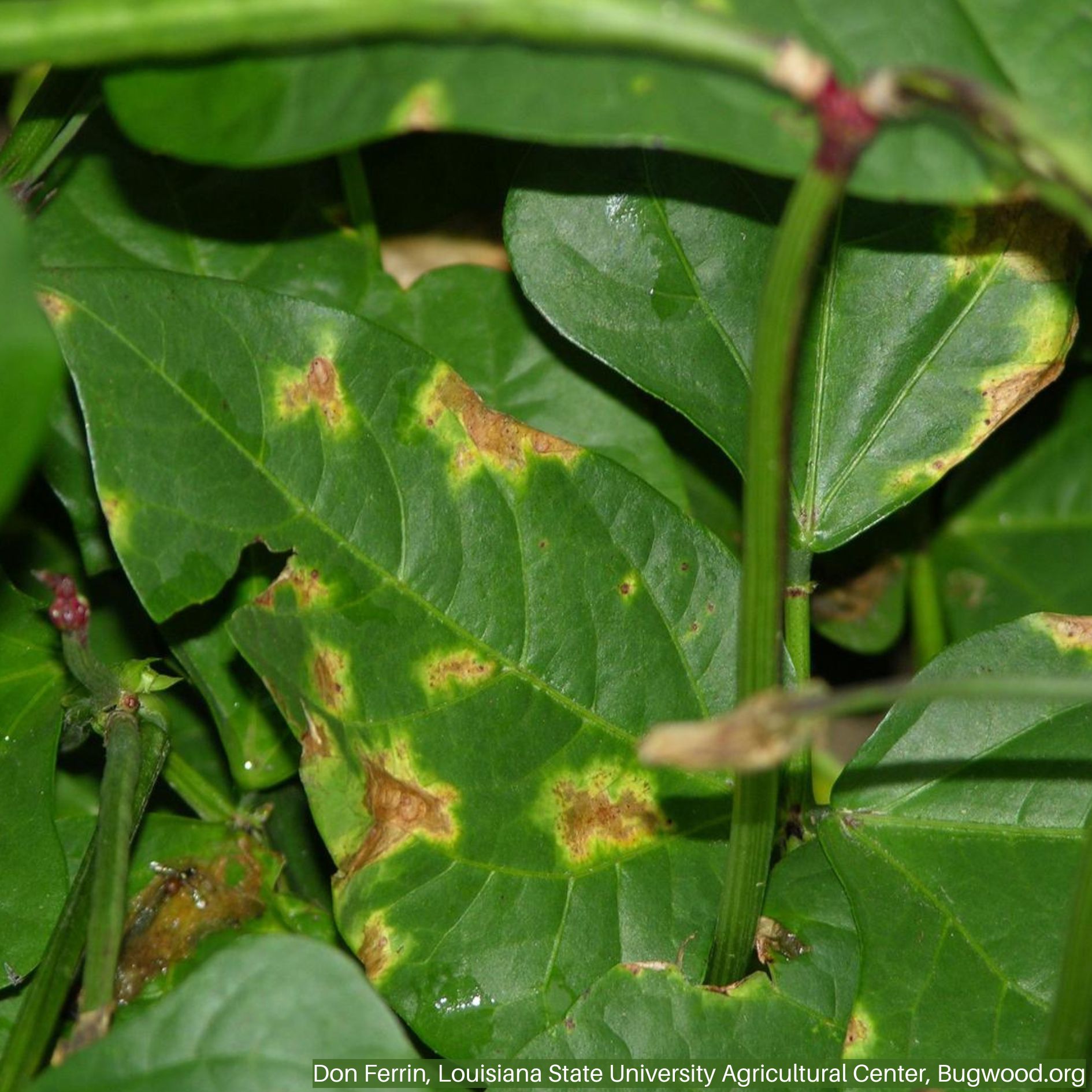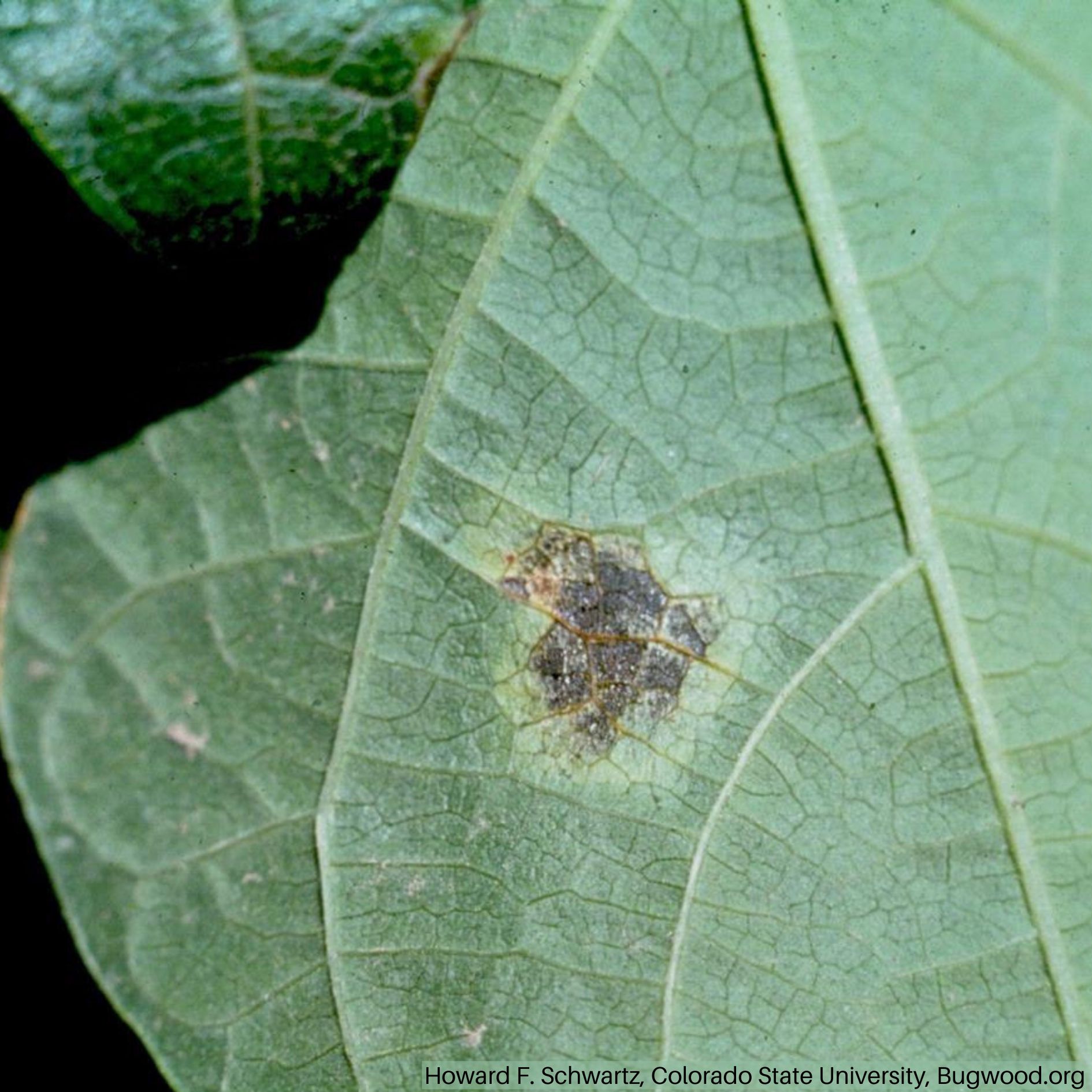Common Bacterial Blight
 Water-soaked lesions on dry bean pods
Water-soaked lesions on dry bean pods Necrotic lesions with yellow halos on cowpea foliage
Necrotic lesions with yellow halos on cowpea foliage Lesion typical of bacterial blight
Lesion typical of bacterial blight Legume crops showing symptoms of common bacterial blight.
Legume crops showing symptoms of common bacterial blight.HOSTS
- Legumes
DESCRIPTION
Common bacterial blight is caused by Xanthomonas campestris pv. phaseoli.
BIOLOGY
Common bacterial blight can be introduced to fields and gardens through infected seeds, plant debris, or alternative hosts. The disease can overwinter in contaminated plant debris. In warm, wet conditions, X. campestris can easily be spread mechanically on tools, insects, and water.
Xanthomonas campestris can survive on outer plant surfaces as an epiphyte, without causing any disease symptoms. This stage can result in a large population of X. campestris, which can further the disease cycle in favorable conditions.
The bacteria can invade the host plant through the stomata or wounds. If the bacteria reaches the plant’s xylem, the water-conducting tissue, the veins will be clogged with dead cells and bacteria.
SYMPTOMS
- Irregularly shaped foliar lesions with brown or tan centers and yellow halos
- Water-soaked spots on the underside of leaves
- Inner tissue of lesions can become necrotic and fall out
- Pods have water-soaked lesions
- Chlorotic and wilted foliage
- Cream-colored bacterial ooze is exuded from lesions
GENERAL MANAGEMENT
- Use certified disease-free seeds
- Rotate with nonhost crops
- Avoid working with crops when plants are wet
- Avoid watering practices, such as overhead irrigation, that result in wet soil and plants for prolonged periods
- Remove weeds and volunteer crops that can act as alternative hosts
- Remove infected crops and crop debris

